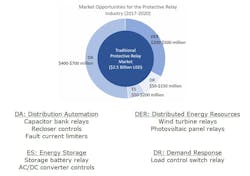Study Finds Relay-Centric Devices and Controls Market Expanding
Newton-Evans Research Co. continues to assess the results of its six-month research study of protective relay usage patterns in the world community of electric power utilities. Findings from 114 large and mid-size utilities in 28 countries point to some newer trends in adoption and use of protection and control technology.
Importance of Purchasing "Known" Relays: Sixty-five percent of the North American respondents strongly agreed with the statement, "It is important that we purchase known relays (a proven product with which we have had prior experience)." Overall, 97% of North American respondents strongly agreed (65%) or agreed (32%). Three people were neutral about this statement. None of the respondents expressed any level of disagreement. Eighty-two percent of North American utilities serving more than 500,000 electricity end users strongly agreed with this statement.
Fifty-three percent of international respondents strongly agreed with this statement. Forty-one percent agreed only somewhat. One person disagreed and one person was neutral about this statement.
Agree or Disagree: "It is important that we purchase known relays (a proven product with which we have had prior experience.)"


